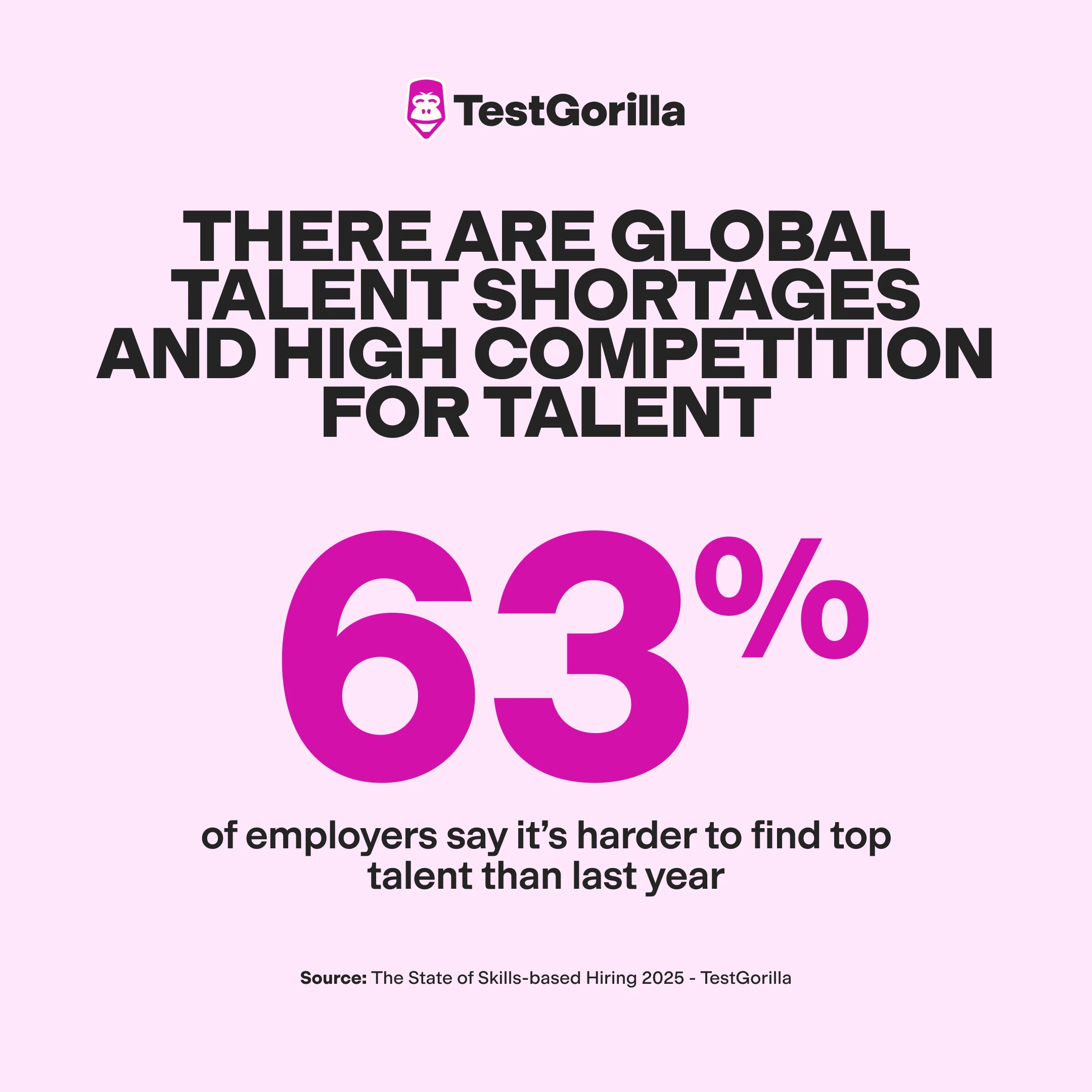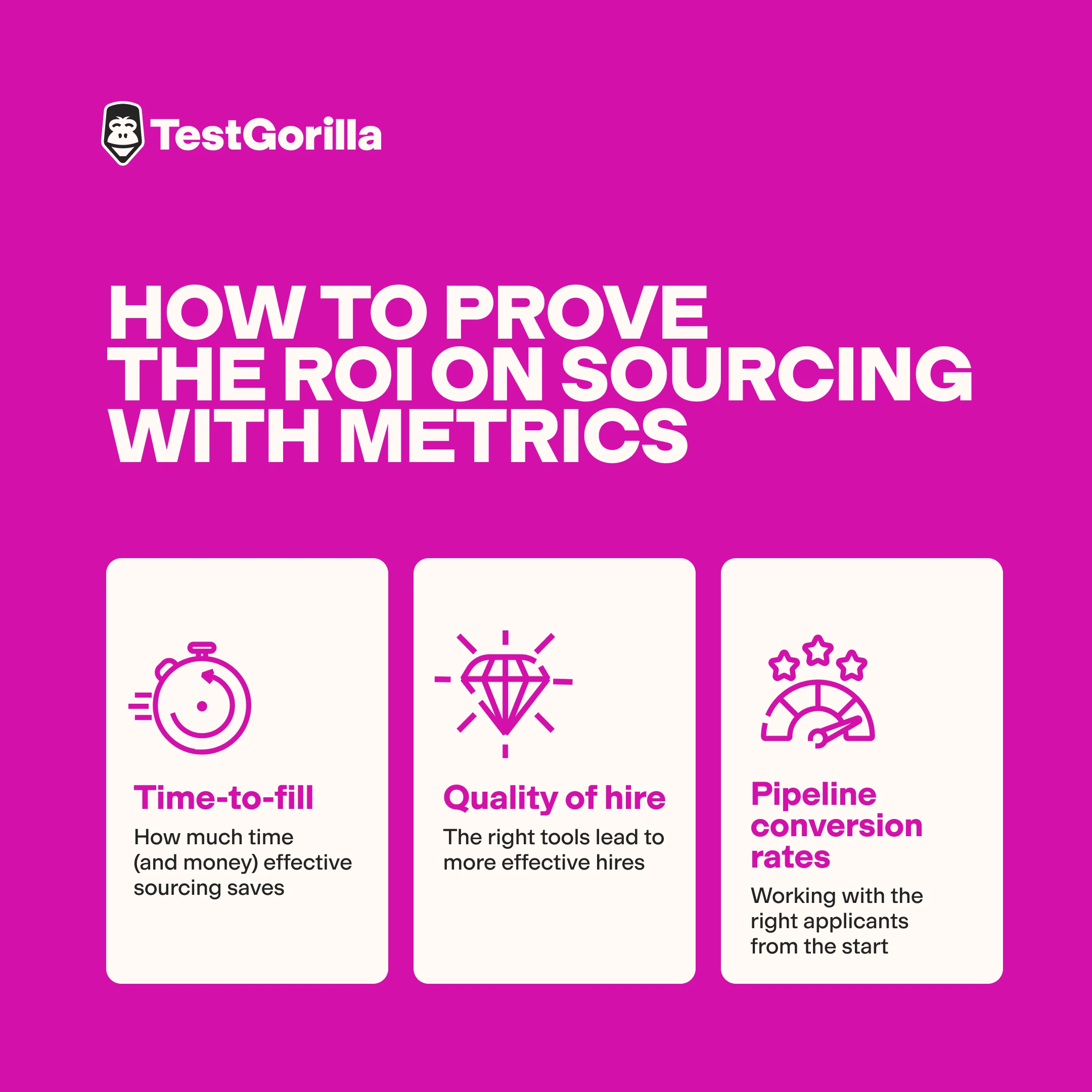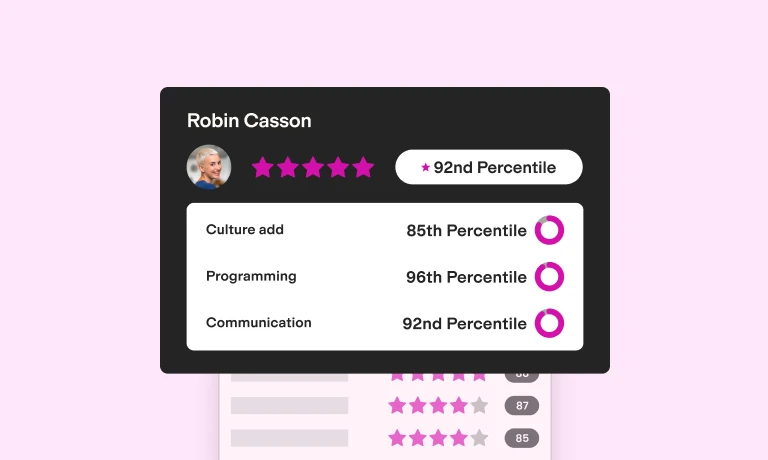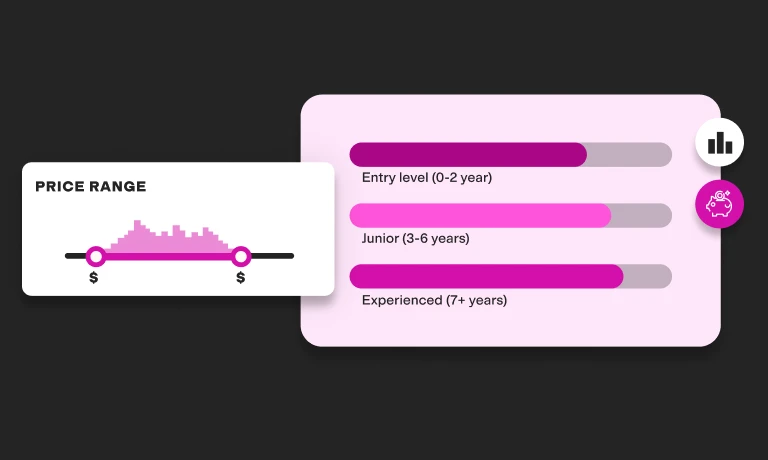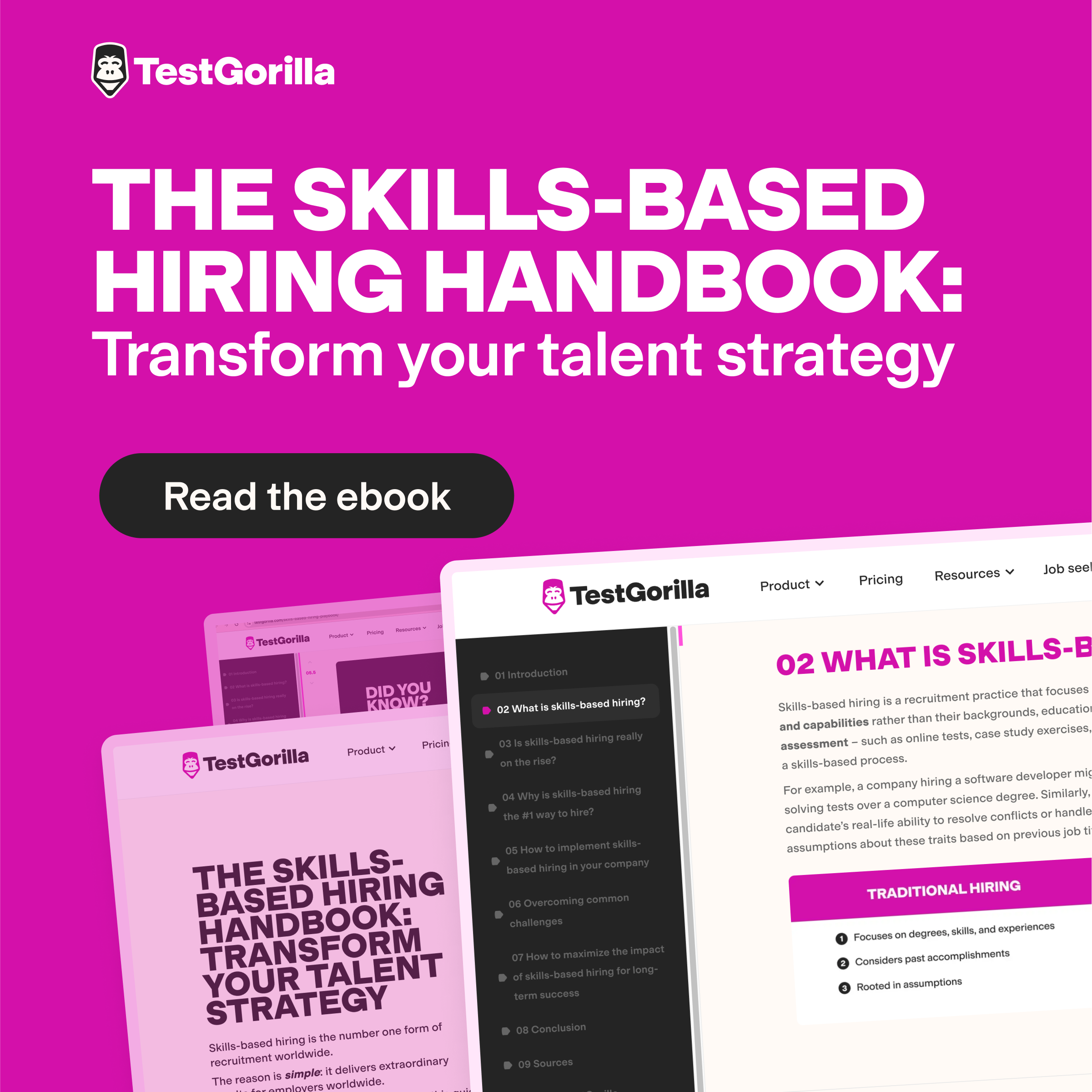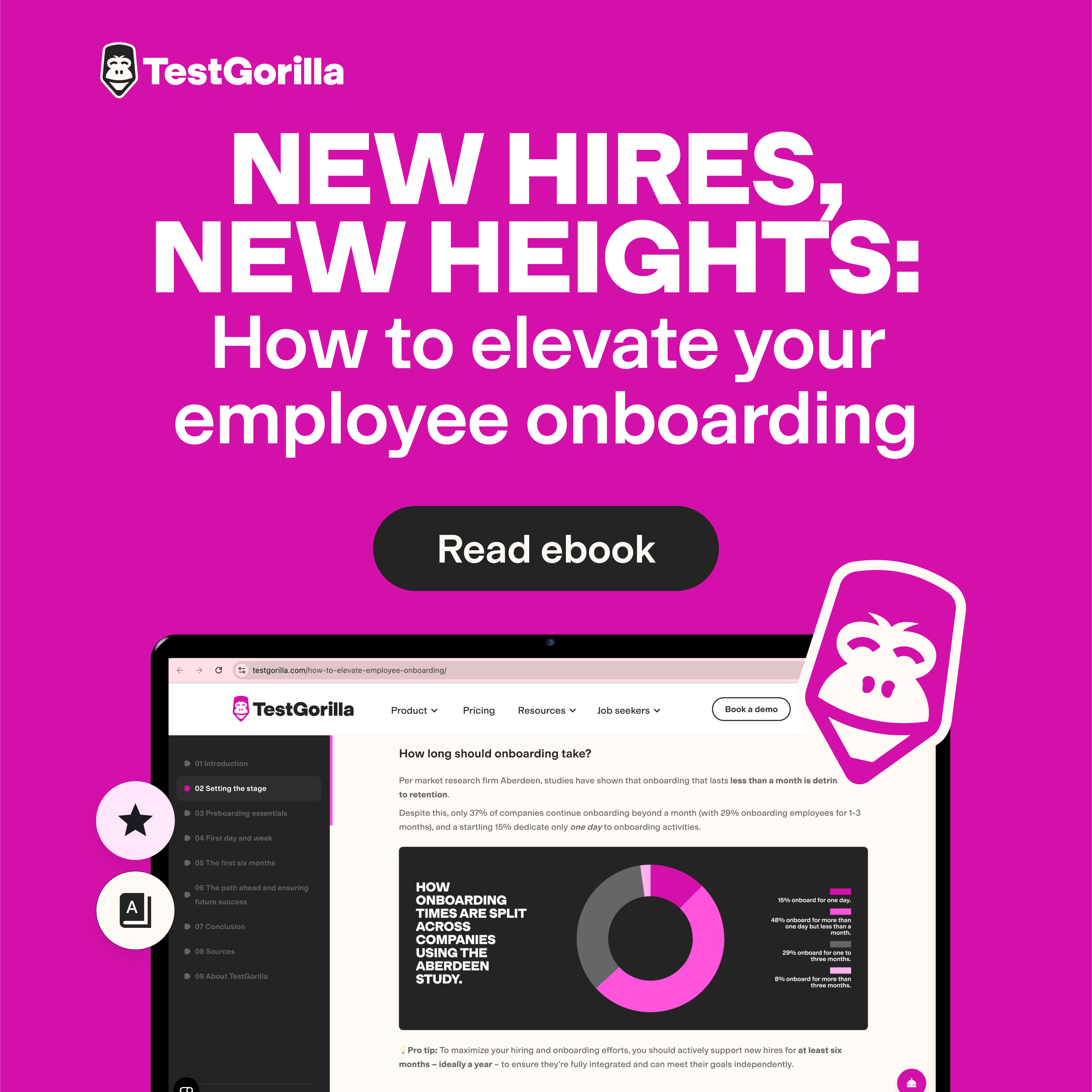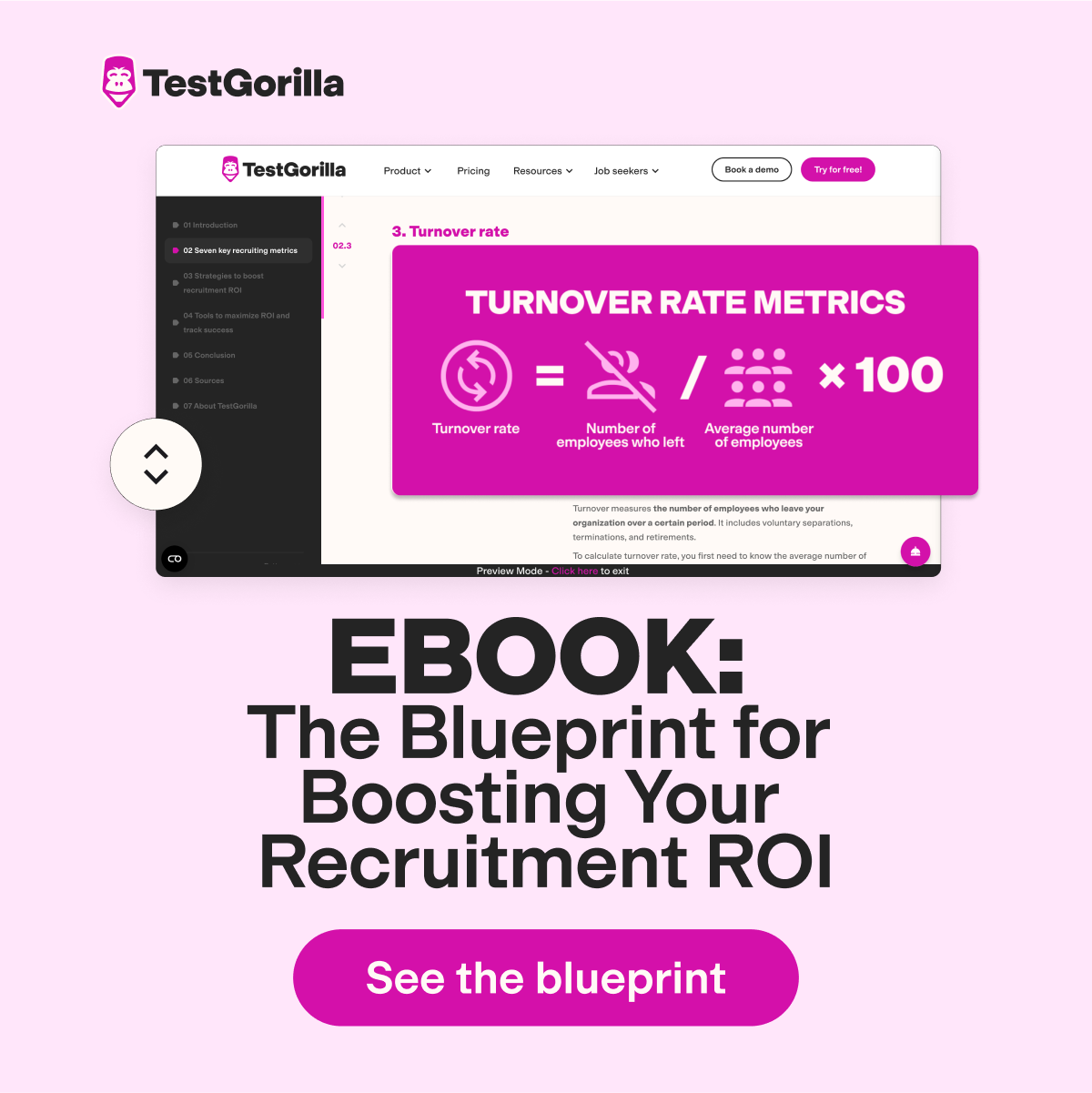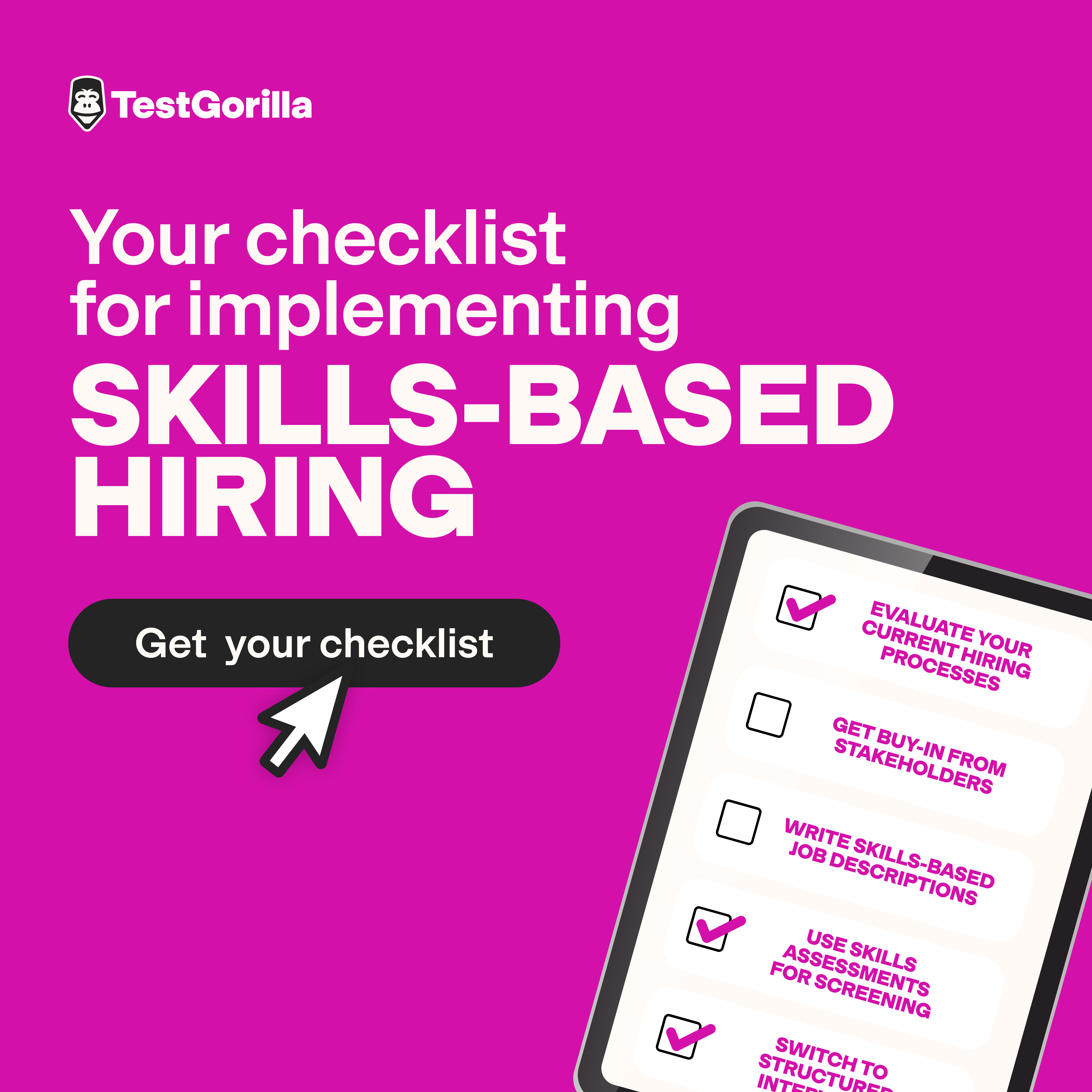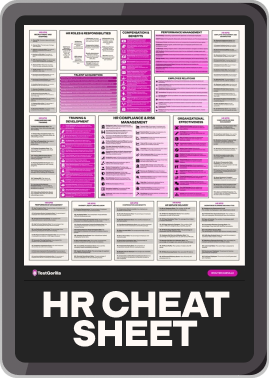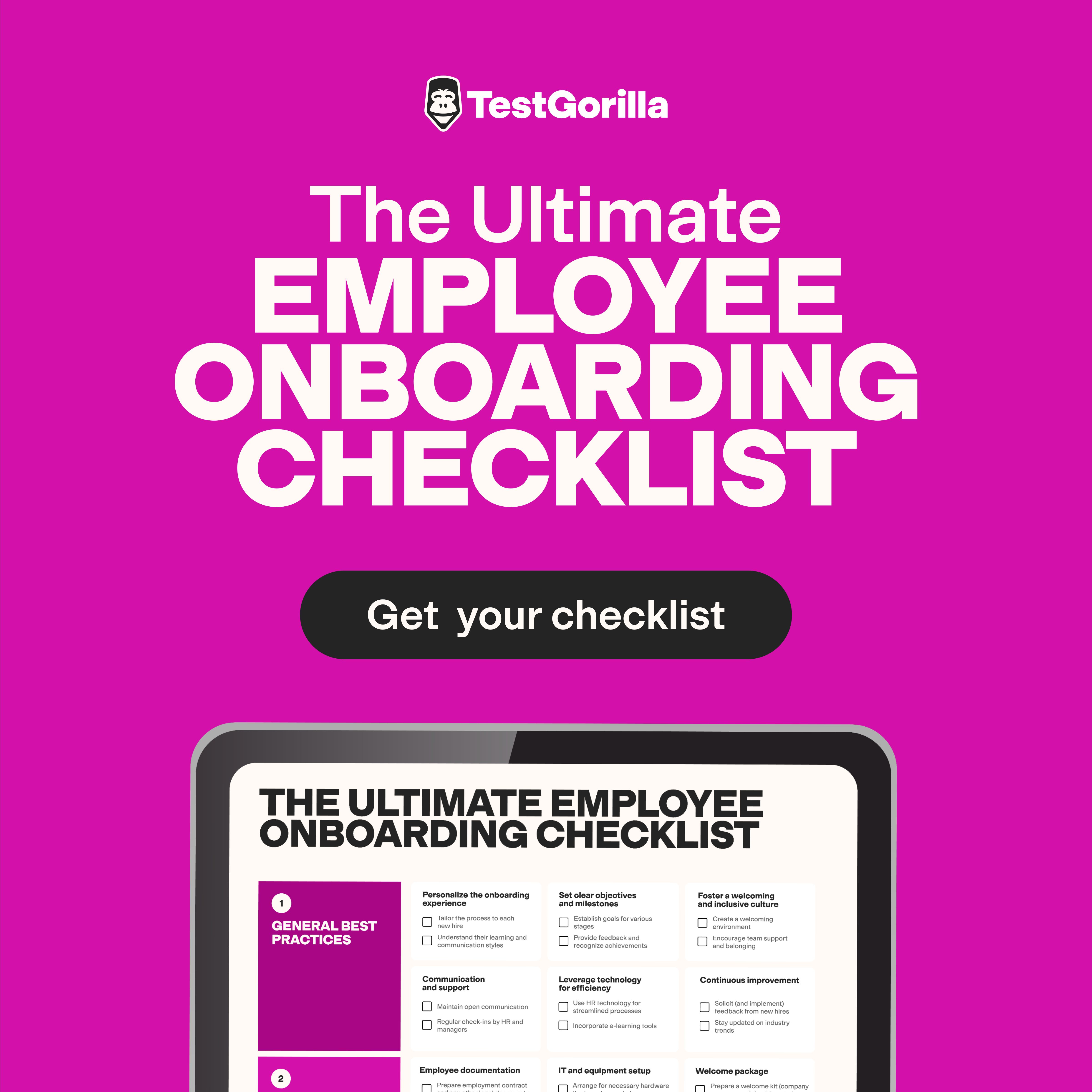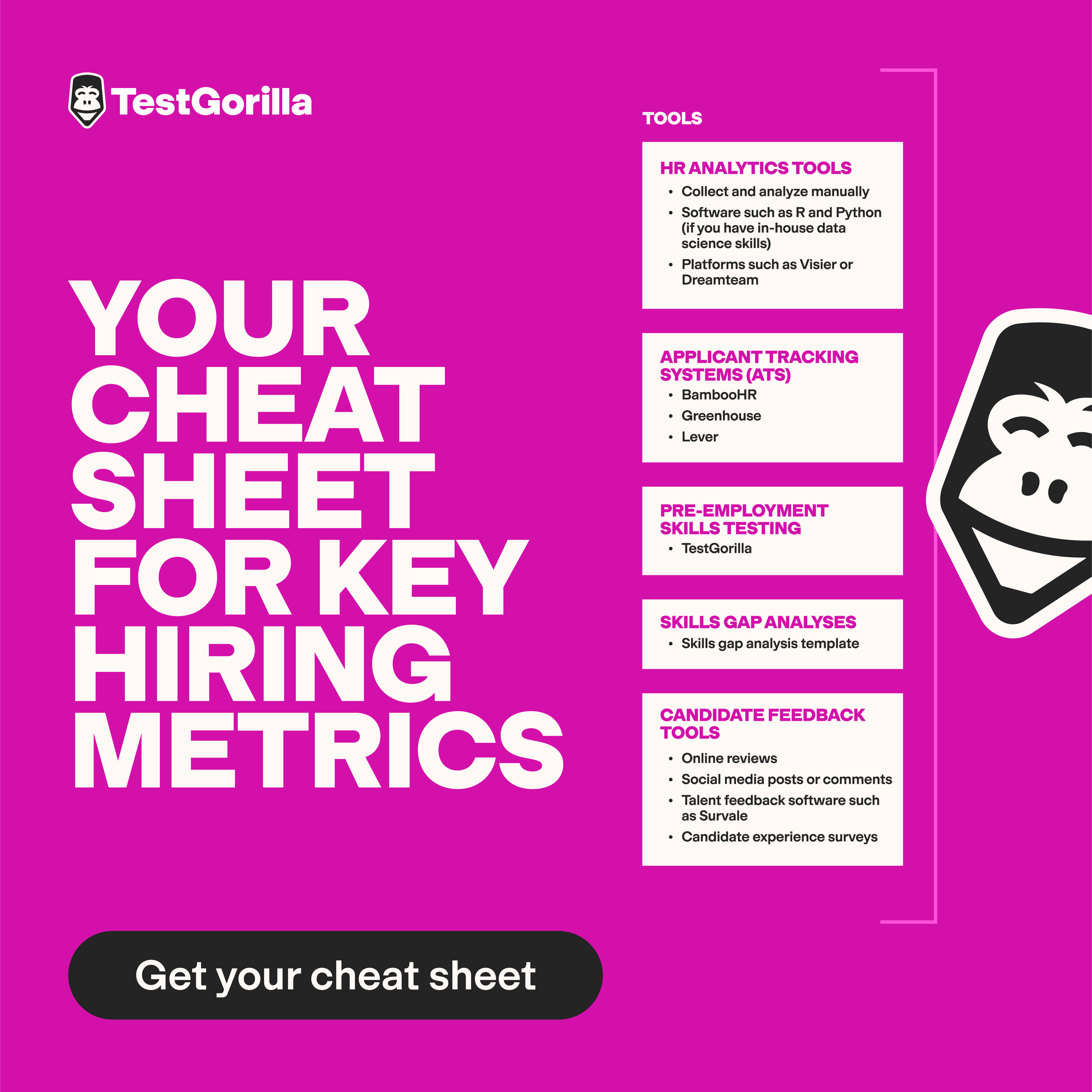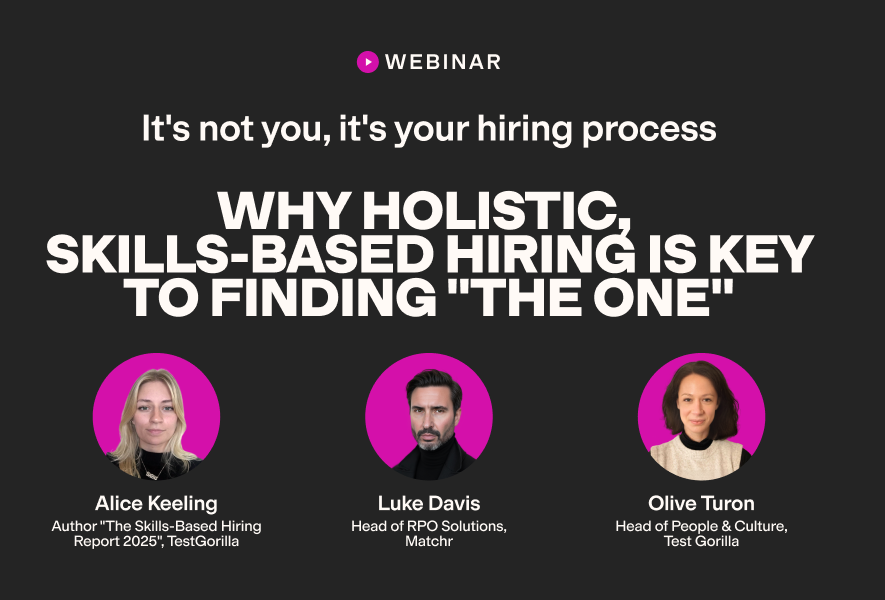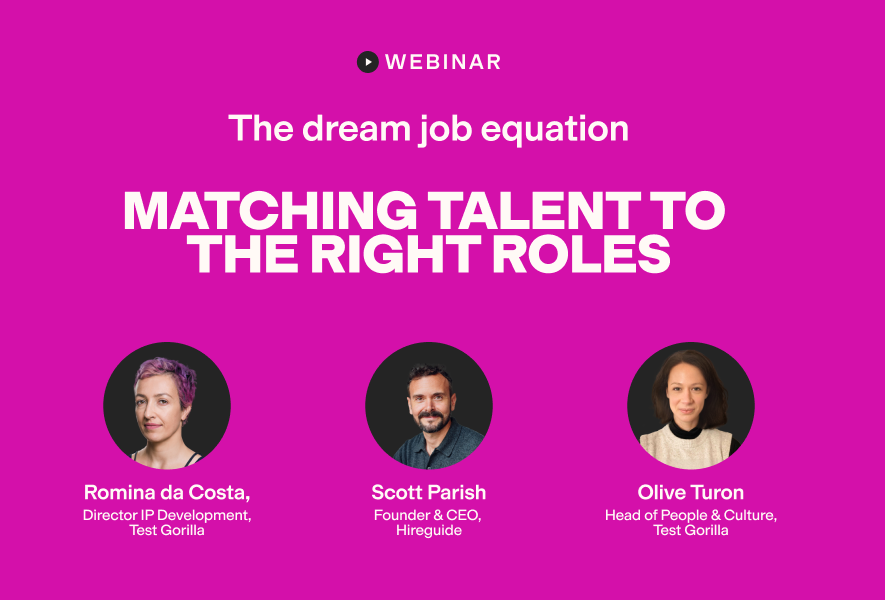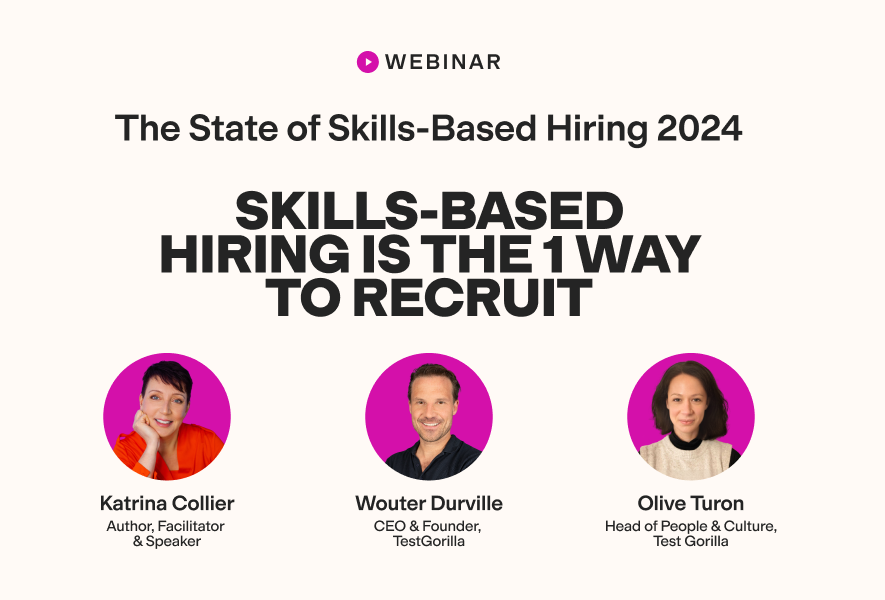How to talk about talent sourcing with your hiring managers (and other stakeholders)
Seventy-seven percent of the sourcing pros we surveyed for our Unlocking Sourcing Success: The Secret Source report said active sourcing is essential or very important to their talent acquisition strategy – but our same research showed that most new hires (73%) aren’t actively sourced. That disconnect between perceived importance and actual outcomes can make hiring managers and other stakeholders question whether sourcing is really worth the investment.
So, how can you get their buy-in?
Several experts that we spoke to, including Mirae Lee, Senior Talent Acquisition Partner here at TestGorilla, said that focusing on the business impact is one of the keys to winning buy-in.
This is why I think reframing talent sourcing as a strategic advantage and key element of overall business strategy, not an optional extra, is the most effective way to secure buy-in. And the onus is on recruiters – particularly those who aspire to be or are sourcing pros – to make this convo happen.
Table of contents
Why hiring managers resist investing in sourcing
“We’ll just post a job ad; we don’t need to worry about sourcing.”
“Let’s wait until we have an open role; we don’t need to look for candidates now.”
“We don’t have the budget.”
“We already attract enough applicants.”
Many sourcers have heard this pushback from hiring managers before when it comes to investing in sourcing over just recruiting.
These objections don’t come out of nowhere. They usually reflect how hiring managers perceive sourcing – and in turn, prioritize it.
Some assume sourcing involves little more than a quick LinkedIn search or scanning a few job boards. Others see it as reactive: something you should do only when a role opens up. Even if they do understand the value of sourcing, many hiring managers are under budget pressure. When money’s tight, sourcing is the first thing to get cut.
Why sourcing desperately needs investment
Our research revealed several interesting things about the current state of sourcing.
For instance, 58% of sourcing teams say they struggle to know whether candidates really have the skills they need for a role. What’s more, two in five sourcing teams say there’s a lack of skilled candidates in the market.
But these struggles aren’t necessarily about sourcers’ abilities and candidate availability – they’re about resource gaps, too.
For example, 19% of sourcing teams experience a lack of resources (including time) dedicated to sourcing.
While most sourcing teams are using mainstream tools like LinkedIn Recruiter, social media, and Indeed Smart Sourcing, 46% of sourcing teams say the tools they use are either “somewhat” or “not at all” effective. (Meanwhile, tools used less commonly, including LinkedIn alternatives and sourcing browser extensions, are seen as more effective. And teams that view their tools as effective source more hires.)
This should raise alarm bells for hiring managers, especially those taking a skills-based approach to recruitment. If sourcers can’t find candidates with the right skills, hiring managers must deal with wasted interviews and costly mis-hires.
By investing in sourcing, including better tools, hiring managers can help sourcers be more confident in their ability to seek out and assess skilled candidates, building better quality talent pipelines.
The case for sourcing: 3 talking points
One of the best ways you can promote the value of sourcing (and, therefore, the need to invest in it) is to highlight its strategic value. This helps reframe any investment in sourcing as a long-term business strategy, rather than a short-term, reactionary response or support function.
This is a compelling approach in the context of the talent war resulting from global talent shortages and high competition for talent. When researching for our 2025 State of Skills-Based Hiring report, we found that 63% of employers say it’s harder to find top talent than last year.
Here are some key talking points you can raise in your next meeting with a hiring manager or other stakeholders in charge of approving the budget for sourcing tools.
1. “Sourcing delivers competitive intelligence managers can act on”
“I learned last quarter that three of our direct competitors were paying base salaries that were 18-22 percent higher to senior developers,” said Chris Badja, e-commerce entrepreneur and managing partner, when we spoke to him about his experiences with sourcing. “In the absence of sourcing, we would have continued posting jobs at our normal rate and wondered why no one was applying.”
Chris also says that, thanks to his success with direct sourcing, “Now hiring managers view sourcing as competitive intelligence that directly affects our capacity to win talent wars and keep up with the trends in the market.”
He’s right: The sourcing process is a great way to collect data on the current state of the talent market. By speaking to potential candidates on a regular basis, you have your finger on the pulse when it comes to market pay, competitor hiring trends, and skill availability. Hiring managers can then use this information to attract the best and brightest to their hiring processes, an essential advantage in the context of the talent war.
By reframing sourcing as a way to stay competitive and attract top talent, you’ll help hiring managers see its strategic value.
2. “Sourcing helps future-proof hiring”
I believe investment in sourcing, especially technology, is key to future-proofing hiring processes.
Imagine your company suddenly needs 15 designers for a new project. If you’ve invested in and prioritized sourcing, and in turn fostered relationships with designers, you might be ready to meet this demand. If not, you’re left scrambling.
It also helps prepare businesses for technological changes on the horizon. Our research reveals that almost half of sourcers say that AI and automation (46%) and advanced data and analytics (43%) will be the most impactful developments on sourcing in the next few years. But only 37% believe their organization is well or extremely well-equipped to respond to these trends.
So, what’s the missing link? Investing in sourcing tools today can help you take advantage of the opportunities these trends will offer.
Hiring managers who fail to do this risk being left behind compared to their competitors. In an Aptitude Research report on sourcing, 33% of companies reported using some AI-driven solutions alongside human expertise in sourcing, while another 37% are already evaluating AI-driven solutions.
3. “Sourcing reduces business risk and costs in the long run”
“In my experience, what resonates [with hiring managers] most is reframing sourcing as risk reduction,” Chris Mitchell, founder and CEO, told us when we asked his thoughts on how to reframe sourcing. “A robust sourcing process prevents costly mis-hires, which every hiring manager understands from personal pain.”
A lack of effective sourcing means hiring managers are more likely to end up with unsuitable candidates, and as a result, hire the wrong person for the job. And as Chris said, mis-hires are costly.
SHRM estimates the cost of mis-hire to be almost $4,700, but many employers anecdotally report it costing them three to four times the role’s salary. This tracks, especially when you account for potential hidden costs, including:
Lower team morale
Lost productivity
Poorer client relationships
A negative impact on company culture
A good sourcing strategy can avoid these costs.
The best insights on HR and recruitment, delivered to your inbox.
Biweekly updates. No spam. Unsubscribe any time.
How to prove the ROI on sourcing with metrics
Quentin Sebastian, co-founder of Rent-A-Sourcer, explains how tangible outcomes show hiring managers the true value of sourcing:
“Leaders buy in when they see ROI tied to time and quality. With the right sourcing tools for expediting outreach and coordination, one client cut recruiter time by 35 percent, while another hit a 78 percent CV acceptance rate with a clearance-ready pipeline. The tools made the results possible, and the results made the business case clear.”
The key is giving hiring managers meaningful metrics. Call rates and numbers of LinkedIn reach notes alone don’t equal sourcing success. They’re activities, not outcomes. Mirae Lee says, “Overemphasis on activity doesn’t resonate with the hiring managers as much as how many strong candidates entered the process because of it.”
Here are some meaningful metrics that land best with hiring managers:
Time-to-fill. Quantifying how much time (and money) effective sourcing saves hiring managers, like Chris Badja explains below, is a persuasive argument for buy-in and investment.
Quality of hire. The more targeted the approach is from day one, the more likely hiring managers will have quality candidates to consider for the role. The proper sourcing tools play a large part in this. Our research found that the right tools lead to more effective hires, with the percentage of new hires that teams actively source directly correlating to the effectiveness of their sourcing tools.
Pipeline conversion rates. Working with the right applicants from the start improves conversion. Candidates are engaged, shortlists are more targeted, and top candidates are more likely to accept an offer.
Chris Badja describes one of the metrics he used to convince his leadership to invest $15,000 annually in sourcing tools:
“I invented a hidden talent ratio metric which measures the number of qualified applicants who we find who are not actively job searching versus those who apply directly. Our most successful new hires last year were a majority of those who were not actively seeking employment when we approached them.
The relationship between investing in sourcing tools and quality metrics is circular. When sourcers have the right tools to track their work and measure outcomes, they can make a stronger business case for investment.
This is important, given that many sourcers don’t feel confident in their ability to track and measure the success of their efforts. In our recent research, we found that 51% of sourcers are not at all or only somewhat confident that they can accurately do so.
The right tools give sourcing teams confidence in their metrics. Not only are they more able to make the business case for investing in sourcing, but they can also use these insights to identify any issues and improve the process.
As Mirae says, “It’s best to show how sourcing improves speed, quality, and cost efficiency, and to highlight the risks of not investing.”
Practical tips for advocating for investment in sourcing
You have the talking points and the metrics…but how do you bring the topic up or combat resistance? Here are some tips.
If a hiring manager or other stakeholder says, “We just don’t have the budget to direct to sourcing at the moment,” say “I appreciate the budget is tight. Let me walk you through the metrics that show investing in sourcing actually saves us money – for example, by reducing time-to-fill and improving pipeline conversions.”
If you’re looking for investment in a specific sourcing tool, Mirae suggests testing out the tool first. “Present the data and if possible, run a trial to show the value-add.”
Reframe the conversation around the risks of not investing. Explain that a lack of investment now could lead to losing talent to other competitors, being on the back foot for future hiring needs, and making costly mis-hires.
How to turn hiring managers into strategic partners
Numbers alone won’t help you convince hiring managers when it comes to sourcing. Meaningful collaboration is more likely to happen if your relationship with the hiring manager is strong.
According to Bersin by Deloitte, “developing strong relationships with hiring managers” was the most influential factor on the performance of talent acquisition departments – and by a long shot. This research isn’t specifically about sourcing – but it reveals that your relationship with the hiring manager is the groundwork needed for your sourcing efforts to truly land.
Here’s how you can improve two-way communication and strengthen collaboration with hiring managers.
Lead with a strong intake meeting
According to Eddie Stewart, Principal Consultant at ES Talent Solutions, who has nearly 30 years of experience in the recruitment industry, “The initial meeting between recruiter and hiring manager to start a search may be the most important conversation of the entire recruiting process. Everything that happens (or does not happen!) afterwards is affected.”
Too often, this essential meeting gets replaced by a short email exchange. This approach is like trying to build a house without laying a solid foundation. Hearing directly from the hiring manager helps you get into their mindset and understand where they’re coming from.
The intake meeting is also an opportunity to help hiring managers develop a better understanding of the sourcing process and how it works and address any concerns they have that are getting in the way of them investing more in sourcing.
If a hiring manager says | You can say |
“I don’t have time for a meeting, just send me a list of candidates." | “I can send you a list but an initial meeting helps me understand exactly what you're looking for so I include only the best quality candidates on that list. This means you avoid having to review unsuitable applications.” |
“I don’t see how a meeting affects the overall quality of hires.” | “An intake meeting helps me get a full picture of the candidate you need – their technical skills, experience, and fit. This means I can bring you a list of the top three candidates who are more likely to accept the role and stay long-term, rather than a list of 15 candidates for you to wade through.” |
Move from transactional partners to trusted advisors
The intake meeting is only the beginning. Follow it up with ongoing, two-way communication where you continuously set realistic expectations to build trust.
From a practical perspective, this helps you keep on top of any changes in approach a hiring manager might make. It also reinforces that hiring is a team effort, you’re not just taking directions from the hiring manager without offering your own insights.
According to Rachelle Roberts, senior talent acquisition manager, "This relationship is not going away. Recruiters need to emphasize, ‘We’re both working toward the same goal, and the more we can communicate, the better I can anticipate questions and needs and be more proactive.’”
Beyond this, an ongoing conversation moves the sourcer-hiring manager relationship from transactional to strategic. Destiny Quinn, People and Talent Executive, explains:
“The more a hiring manager and a recruiter partner together to fill vacancies, the shorter the time to fill, as hiring managers will trust that the candidates presented are extremely qualified – a recruiter will become a trusted advisor to hiring managers.”
When the relationship changes like this, hiring managers are more likely to follow your advice, not only when it comes to candidates but also when it comes to supporting the sourcing process.
If a hiring manager says | You can say |
“I just want candidates; I don’t need advice.” | “The market insights I’ve gained from speaking to tens/hundreds of candidates – such as salary expectations and candidate preferences – can help you improve hiring outcomes. By working together as partners, we can reduce time-to-fill and improve pipeline conversions.” |
“I don’t have time for ongoing updates.” | “We only need quick check-ins. These help me anticipate any changing priorities so I can proactively source the right candidates, avoiding a last minute scramble to find someone.” |
Reframing sourcing as a strategic advantage
Developing strong sourcer-hiring manager relationships drives talent acquisition performance more than anything else. But hiring managers aren’t going to lead the charge in these relationships.
It’s up to you to communicate the value of sourcing to them.
At the end of the day, sourcing isn’t a cost. It’s an investment that pays off in speed, quality of hires, and reduced business risk.
It’s time to get talking to your hiring managers and tell the story around why sourcing isn’t an optional extra, it’s a strategic advantage.
Contributors
Chris Badja, e-Commerce Entrepreneur and Managing Partner
Chris Mitchell, Founder and CEO
Quentin Sebastian, Rent-A-Sourcer, Co-Founder
You've scrolled this far
Why not try TestGorilla for free, and see what happens when you put skills first.


